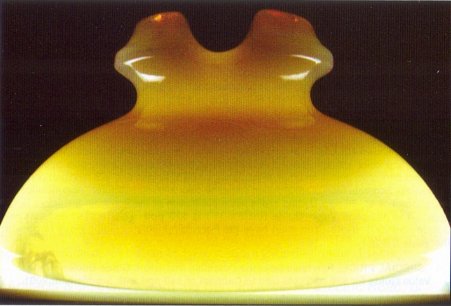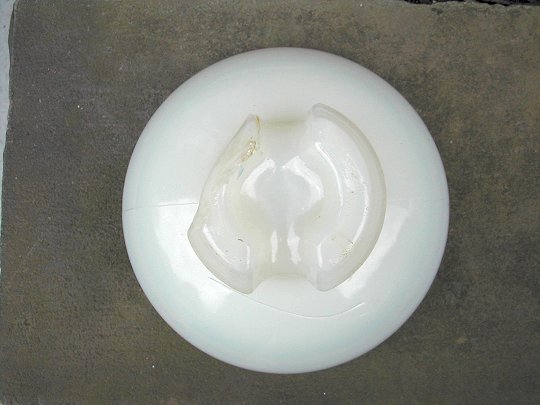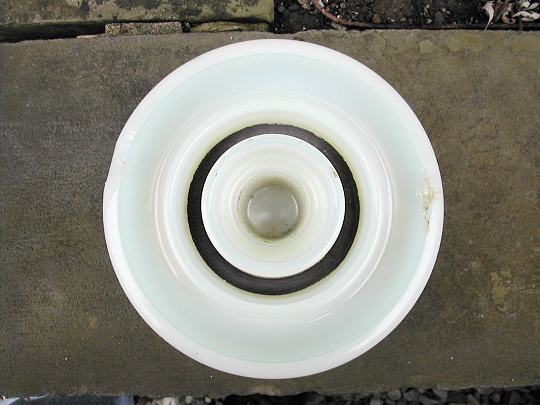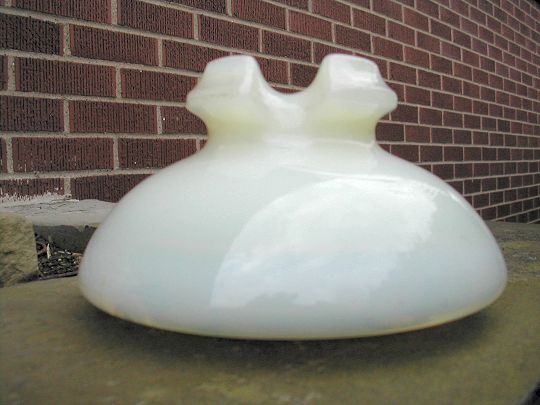Bill Plunkett reports on an extremely rare insulator. He writes about "a
CD301.2 FRY that my Dad has recently purchased. He got it along with a CD164.4
FRY in blackglass. As we looked into it's rarity, we found that it's possibly
only the third one known in this color and the only complete "whole"
one. You'll notice it only has a chip on one ear and two small bruises on the
skirt. Butch Haltman has a complete one that has the top and bottom glued
together by Dwayne Anthony. The other example known is a broken bottom half
only. The complete story on these two examples is in the March 1996 issue of
CJOW on pages 8-11. There is also a picture of Butch Haltman's display at the
1995 Western Regional Show in Visalia CA on page 60 of the November 1995 issue
of CJOW showing his CD301.2."

Editor's note: The H.C. Fry Glass Company of Rochester, PA experimented with
the idea of producing insulators circa 1920. All known examples of Fry
insulators, which come in four CD styles, were dug at the plant site. None are
known to have been placed in service.
The top picture reveals the opalescence of the glass when underlit.
In the picture below, the same insulator looks almost like milk glass.





































































